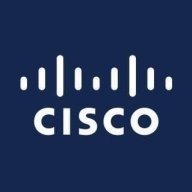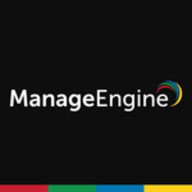


ManageEngine Endpoint Central and Cisco Meraki Systems Manager offer robust solutions for endpoint and mobile device management. ManageEngine Endpoint Central has an edge in affordability and customer support, while Cisco Meraki Systems Manager is preferred for its comprehensive features and ease of deployment.
Features: ManageEngine Endpoint Central is valued for extensive asset management, patch management capabilities, and detailed device control. Cisco Meraki Systems Manager is appreciated for seamless integration with network infrastructure, real-time monitoring, and scalability.
Room for Improvement: ManageEngine Endpoint Central users highlight the need for a more intuitive design, quicker issue resolution, and refinement in interface usability. Cisco Meraki Systems Manager feedback points to a desire for more customization options, enhanced reporting, and improved analytical functions.
Ease of Deployment and Customer Service: ManageEngine Endpoint Central deployment is reported to be straightforward but occasionally faces technical glitches. Users appreciate its responsive customer support. Cisco Meraki Systems Manager is praised for hassle-free cloud deployment and reliable customer assistance.
Pricing and ROI: ManageEngine Endpoint Central is recognized for competitive pricing and satisfactory return on investment. Cisco Meraki Systems Manager, while more expensive, is deemed worth the investment due to superior functionality and integration efficiency.
| Product | Market Share (%) |
|---|---|
| Microsoft Intune | 31.3% |
| ManageEngine Endpoint Central | 7.3% |
| Cisco Meraki Systems Manager (MDM+EMM) | 2.2% |
| Other | 59.199999999999996% |



| Company Size | Count |
|---|---|
| Small Business | 116 |
| Midsize Enterprise | 46 |
| Large Enterprise | 152 |
| Company Size | Count |
|---|---|
| Small Business | 16 |
| Midsize Enterprise | 5 |
| Large Enterprise | 13 |
| Company Size | Count |
|---|---|
| Small Business | 25 |
| Midsize Enterprise | 14 |
| Large Enterprise | 35 |
Microsoft Intune provides centralized management of mobile devices and applications, ensuring security, compliance, and productivity through integration with Microsoft services like Microsoft 365 and Azure Active Directory.
Organizations use Intune for managing mobile devices and applications, enhancing security and compliance across platforms. With features like single sign-on, conditional access, and zero-touch deployment via Autopilot, it facilitates efficient operations. Intune's scalability, easy enrollment, and capabilities such as remote wipe support diverse device management, offering robust data protection and efficient operation. Despite its features, improvement areas include reporting, compatibility with non-Microsoft devices, and better support for macOS and Linux devices.
What are the key features of Microsoft Intune?
What benefits should users look for in reviews?
In industries such as finance, healthcare, and education, Microsoft Intune is implemented to ensure secure and compliant device management. Companies leverage its capabilities to deploy security policies and manage both corporate-owned and BYOD environments, facilitating a unified approach to data protection and compliance.
Every user is unique. Every device, a bit different. Systems Manager keeps the network in the loop about constantly changing devices, automatically tracking device posture and adjusting security policies to match.
ManageEngine Endpoint Central is a unified endpoint management (UEM) solution offered by ManageEngine, a division of Zoho Corporation. It is designed to help organizations efficiently manage and secure their endpoints from a centralized platform. Endpoint Central provides a comprehensive set of features and capabilities to streamline endpoint management and enhance security across diverse devices and operating systems.
ManageEngine Endpoint Central Features:
ManageEngine Endpoint Central Benefits:
Reviews from Real Users
PeerSpot user, Sr Engineer Administrator at a university, says that "Its cross-platform capabilities and the ability to do both OS-level patching and third-party patching are valuable. It is difficult to find a software product that will do all that for you out of the box, and you don't have to do any configuration other than your initial setup. Once you do that, there is a very minimalistic approach to getting it operational. You can have it up and running within a 20-minute time span."
Park Armstrong, Chief Technical and Solution Architect at Vertigo Inc., writes that ManageEngine Endpoint Central is “Helpful for identifying and filling the gaps and meeting compliance needs, but each of their product works as an independent product and lacks integration”.
We monitor all Enterprise Mobility Management (EMM) reviews to prevent fraudulent reviews and keep review quality high. We do not post reviews by company employees or direct competitors. We validate each review for authenticity via cross-reference with LinkedIn, and personal follow-up with the reviewer when necessary.